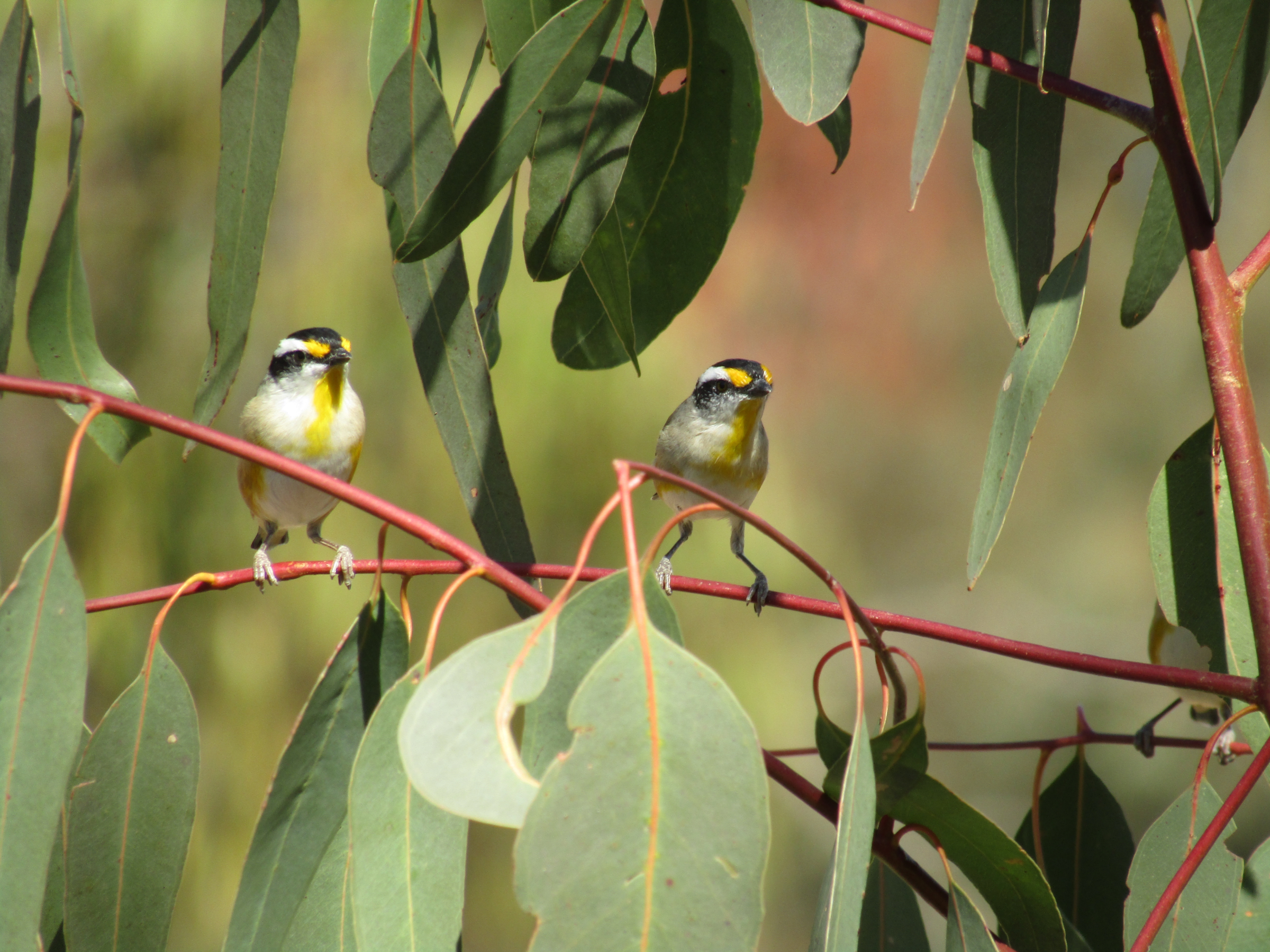
These beautiful little birds are Striated Pardalotes, sometimes known by the old bush name ‘Chip Chip’. That name comes from one of its calls. Its repetitive ‘chip chip’ or ‘dick did it’ calls can be heard just about anywhere that eucalyptus trees grow in the Maranoa.
The word ‘striated’ means striped or streaked: elsewhere this species has white streaks and stripes throughout the black cap on top of its head, but most of the birds seen here have a plain black cap.
Pardalotes feed on small insects gleaned from leaves of eucalypts. Because they are so small (about 10cm long) and are often high up in trees, they can unfortunately be difficult to see well.
Pardalotes sometimes nest in small holes in trees but more frequently they excavate a tunnel into the steep bank of a creek, a gully or a road cutting. The nest is then made in a chamber at the end of the tunnel. Pardalotes are always on the lookout for a suitable nest site and will sometimes dig their tunnel into soil piles in gardens and construction sites. They will also explore the eaves of older-style houses for nest sites.
One of the favourite foods of Pardalotes is an insect called a ‘lerp’. The insect sucks juices from leaves and secretes a whitish substance that it forms into a little shelter to live under. Pardalotes know how to flip the shelter and get to the tasty insect below. Interestingly, some birds such as Noisy Miners (commonly called ‘mickey birds’) like to eat this shelter – it’s rich in carbohydrates. The Miner likes trees to be full of lerps, so it will attack any Pardalotes trying to eat the lerps. Miners will also chase Pardalotes all over the sky, sometimes pursuing them for hundreds of metres to drive them away.

